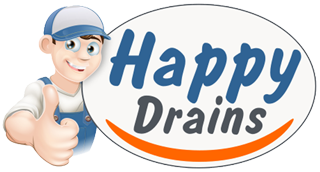Toilets. We all use them. Silly thing to say, but we rely on them several times a day if you have a bladder like ours. When they go wrong, they go badly wrong and can cause a nightmare in your household. We’ve all had a mate who has told you the toilet is clogged. You get home, dreading to see what’s waiting for you in the bathroom only to find two well-polished clogs Barry picked up on his stag weekend in Amsterdam sat in the bowl.
On a serious note, a blocked toilet can really cause an issue. Even ruin your evening, but we’re here today to tell you how you can unblock your toilet and get back to your day-to-day lives.
First off, other than Barry’s clogs, let’s tell you some of the most common causes of a blocked toilet drain…
Many people think that if it looks small enough, let’s throw it down the loo. That’s a common mistake many people make; the disposing of un-flushable products down their toilets. Our expert engineers have come across some surprising finds over the years. The most common issues we have found are cotton wool balls, ear buds, wet wipes, dental floss, false teeth and the odd child’s toy. We could go on, but this whole article will become an extensive list. Over time these can form a serious blockage to your toilet drain pipes.
Another common issue is your toilet trap becoming blocked or broken. The toilet trap is the curved segment that can be found in the lower part of your toilet. The main purpose of this is to hold standing water and prevent unwanted and nasty sewer gasses entering your bathrooms and homes. Over time, the unwanted un-flushable items can clog the trap and cause what we call a backed-up toilet.
One final problem that can cause the blockage, which is beyond your control, and isn’t anything to do with you or what you have flushed: the main sewage line that runs through to your property.
If you have identified a blockage, we recommend, as a first point of call, to tackle it yourself using a simple homemade fix. If you haven’t got one already you can pick one up from all the major DIY stores. The Plunger. Just be mindful, there are two types of plungers. The flange plunger is ideal for all toilets and has an extra flap attached. A cup plunger doesn’t have an extra flap but is suitable for all sinks, bathrooms and showers.
Once you have your flange plunger, begin by gently and vigorously pumping over the toilet basin. The seal on your plunger will act like a kinetic wave which will push the blockage and bring to the surface if accessible. This should help you identify a potential cause. Remove and continue until you’re satisfied the blockage is clear. Hopefully that has resolved your blockage problem, if not don’t worry.
We are here and available to speak to you 24 hours a day. Once we have identified what the potential cause could be, we will book in an appointment for one of our expert engineers to attend your property. You can contact us on 07824 757572 / 0800 849 8099 or you can email us at service@happydrains.co.uk


